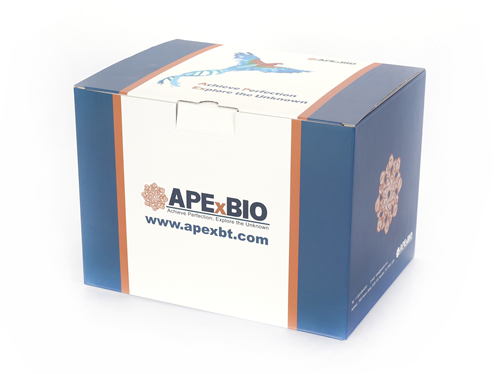- Home
- Signaling Pathways
- Immunology/Inflammation
- Cyclosporin D
Cyclosporin D
Cyclosporin D is an immunosuppressive agent [1].
Cyclosporin D (CsD) is an analogue of cyclosporine A with weak immunosuppressive activity. Cyclosporin D has been used as an internal standard for the quantification of cyclosporin A. In human multidrug-resistant ovarian cancer cells, cyclosporin D significantly overcame adriamycin resistance [2]. In lymphocyte, CsD weakly inhibited PHA-, PWM-, and PMA + Ca2+-induced cell proliferation [3].
In mice, CsD inhibited edema in mouse ear and alkaline phosphatase activity in mouse skin induced by TPA by 98% and 88%, respectively. In cytosol of mouse pancreas, CsD inhibited the Ca2+/calmodulin-dependent phosphorylation of the elongation factor 2 (EF-2) and the TPA-induced increase of EF-2 [1]. Cyclosporin D was effective in inhibiting P. falciparum parasite in vitro and P. berghei malaria parasite development in vivo when administered orally [4].
References:
[1]. Gschwendt M, Kittstein W, Marks F. The weak immunosuppressant cyclosporine D as well as the immunologically inactive cyclosporine H are potent inhibitors in vivo of phorbol ester TPA-induced biological effects in mouse skin and of Ca2+/calmodulin dependent EF-2 phosphorylation in vitro. Biochem Biophys Res Commun, 1988, 150(2): 545-551.
[2]. Mizuno K, Furuhashi Y, Misawa T, et al. Modulation of multidrug resistance by immunosuppressive agents: cyclosporin analogues, FK506 and mizoribine. Anticancer Res, 1992, 12(1): 21-25.
[3]. Sadeg N, Pham-Huy C, Rucay P, et al. In vitro and in vivo comparative studies on immunosuppressive properties of cyclosporines A, C, D and metabolites M1, M17 and M21. Immunopharmacol Immunotoxicol, 1993, 15(2-3): 163-177.
[4]. Uadia PO1, Ezeamuzie IC, Ladan MJ, et al. Antimalarial activity of cyclosporins A, C and D. Afr J Med Med Sci, 1994, 23(1): 47-51.
| Physical Appearance | A solid |
| Storage | Store at -20°C |
| M.Wt | 1214.62 |
| Cas No. | 63775-96-2 |
| Formula | C63H111N11O12 |
| Solubility | ≥60.7 mg/mL in DMSO with gentle warming and ultrasonic; insoluble in H2O; ≥102.6 mg/mL in EtOH |
| Chemical Name | (3S,6S,9S,12R,13Z,15S,16Z,18S,21S,22Z,24S,30S,31E,33R)-14,17,23,32-tetrahydroxy-6,9,18,24-tetraisobutyl-3,21,30-triisopropyl-1,4,7,10,12,15,19,25,28-nonamethyl-33-((R,E)-2-methylhex-4-enoyl)-1,4,7,10,13,16,19,22,25,28,31-undecaazacyclotritriaconta-13,16,2 |
| SDF | Download SDF |
| Canonical SMILES | C/C([H])=C([H])/C[C@@](C([C@@](N1C)([H])/C(O)=N\[C@@](C(N(CC(N([C@@](/C(O)=N/[C@@](C(N([C@@](/C(O)=N/[C@@](/C(O)=N/[C@](C(N([C@@](C(N([C@@](C(N([C@@](C1=O)([H])C(C)C)C)=O)([H])CC(C)C)C)=O)([H])CC(C)C)C)=O)([H])C)([H])C)([H])CC(C)C)C)=O)([H])C(C)C)([H])CC( |
| Shipping Condition | Small Molecules with Blue Ice, Modified Nucleotides with Dry Ice. |
| General tips | We do not recommend long-term storage for the solution, please use it up soon. |
Quality Control & MSDS
- View current batch:
Chemical structure








